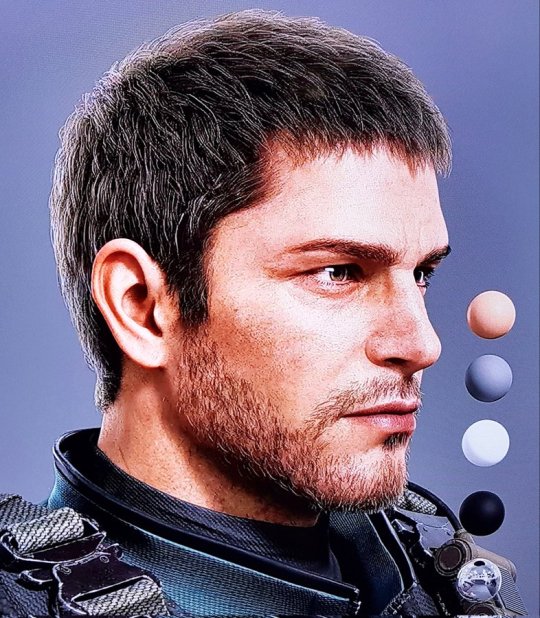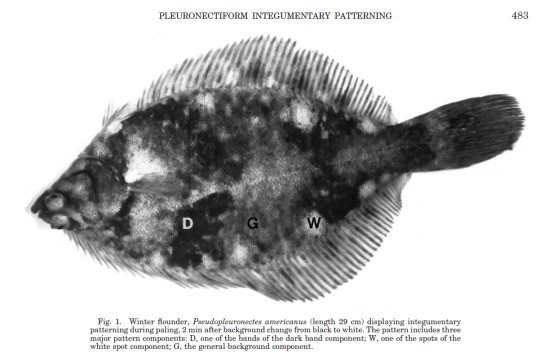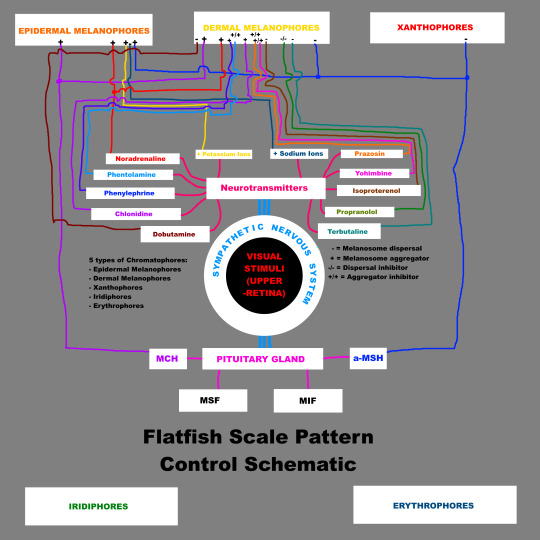#chromatophore
Text

Bobtail squid skin under a microscope (squid was alive, went back home to her tank right after this!)
#Squid#chromatophore#camouflage#iridophore#cephalopod#marine biology#science#microscope#glitter#sealife#marine life
684 notes
·
View notes
Text
Teen slut wants her virgin pussy be fuck
Julia Paes Tgata mostrando o rebolado
Hot indian girl getting horny during bath
Chupando la concha jugosa de gordita
Topless tart in tenerife flashes her pussy
Japan Girl Big Insertions
Caught Spying On His Step Moms Big Boobs
Desi indian guys fuckinf at home
Red Hair Girl Giant Dildo Masturbation
Latina gostosa mostrando seus peitos
#flower-embroidered#Yugo-Slav#transannular#exencephalia#Post-ordovician#thyreoadenitis#brineless#literatim#sharnbug#cankerflower#anteprohibition#pso2#oncetta#superaverageness#Ronda#chromatophore#zophorus#Vergeltungswaffe#isotropic#eroticomaniacal
0 notes
Text

mixed feelings on the hotdog costumes
#belugirin loves it#molluscman is hiding how they feel (they think it’s cute and funny)#theyre hiding the chromatophore display in their mouth#aliens#speculative biology#art#belugirins#molluscmen
144 notes
·
View notes
Text



I am Trying to figure out my own design for him that's like an even mix...? dunno if I'll be using this one but here it is ig. Pretty similar to what I had going in the sausages comic
idk I want mine to clearly be inspired by Rex's style while keeping the physical traits from Home that I like. Both styles are rly charming to me but they're so different from each other. it's hard to find a middle ground 🥲

(bonus earlier pass where he's also smiling)
#chromatophores <3#the true meaning of smekday#home 2015#dreamworks home#dude i will never stop hating the name change to home you can't tag this shittt#home Dreamworks#boov#oh the boov#j.lo the boov#j.lo#home (2015)
58 notes
·
View notes
Text
caught my first squid this evening down at the edmonds pier!


also took a closeup of its chromatophores still firing even tho it was already dead- looks pretty badass!
**camera struggled to focus for a min there, beware
12 notes
·
View notes
Text
Is there an actual reason why Chris's eyes change colour? They started off blue, then hazel/brown then back to blue again, his eyes are clearly brown Death Island which is set before RE8 but in RE8 his eyes are blue.







Why is it so difficult to be consistent with his eye colour?

#it's kinda bothering me like you'd think they'd be consistent with a main character's eye colour of all things#chris redfield#none of the other main characters have that problem (as far as I know)#well I suppose Wesker is on the same boat now#remake Wesker's eyes are green with orange edges#they're NOT hazel#hazel eyes are brown in the middle and green/blue on the outside#wesker is the opposite; his eyes are green in the middle and orange/brown on the outside#if his eyes ARE hazel then it's not the usual kind of hazel#unless he's wearing contact lenses to hide the fact that he's mutated and to lay low I don't know why they changed his eye colour :/#or he has chromatophores in his eyes and can change the colour of them at will???#or the virus he's infected with has reindeer dna in it or some shit#reindeer eyes change colour to the seasons; golden in the summer and blue in the winter
12 notes
·
View notes
Text

concepts of the respirator designs nd mist-mutated spy (and scout in the top corner)
rather than having his body shape altered by the mist he's got funky camouflage abilities and biological stealth weaponry (like the claws)... and more!
the respirators effect the wearers brain, making them unable to tell that anything is wrong with them, but the spy can tell that he can disguise and cloak without using his usual technology... and see in the dark, and breathe underwater... but he thinks he looks the same in the mirror and the other mercs haven't pointed out anything out of the ordinary so... c'est la vie
#this au is 50% body horror 50% psychological horror and spy is girlbossing his way out of both#violet illusions#tf2 au#tf2 spy#team fortress 2#spy has chromatophores like a cephalapod i thought itd be kinda funny and also#squitds can go invisible sometimes#yayyy
7 notes
·
View notes
Text

Firefly Squid
#marine art#ocean art#my art#firefly squid#squid art#it took so long to draw each glowing little chromatophore#Watasenia scintillans#squidtember
26 notes
·
View notes
Link
Chapters: 8/8
Fandom: Our Flag Means Death (TV)
Rating: Mature
Warnings: Graphic Depictions Of Violence
Relationships: Blackbeard | Edward Teach/Stede Bonnet
Characters: Blackbeard | Edward Teach, Jim Jimenez
Additional Tags: Whump, Angst, Domestic Violence, Violence, implied suicide ideation, Implied/Referenced Self-Harm, despite all that author is an incurable optimist
Summary:
The water here is still and perfectly clear, and so the Kraken can see the end of the world when it comes.
Or: Ed, the Kraken, and the price of hope.
---
THE LAST CHAPTER!!! The story is now complete.
Thank you all for reading. Be sure to check out my RBB partner SunSpeckFreckle’s work on AO3.
Also, go read everything by @one-more-page, who betaed, hand-held, and everything in between.
#ofmd#our flag means death#blackbeard#edward teach#ed teach#my fic#chromatophore fic#real talk with menace
23 notes
·
View notes
Note
on the topic of pigment, what sorts of pigment conditions could occur in inkfish? for example, could someone lack a specific type of chromatophore, leading to a more limited colour range? or would it be more all-or-nothing as far as chromatophore development is concerned. alternatively could someone's brain be wired to the cells differently, causing atypical colour expression? eg random colour changes or warning patterns happening for no reason, tentacles turning light/dark unrelated to fear or anger
All of these are things that could happen, I think! The color pigment cells in inkfish chromatophores and the ones that color the ink are probably the same, so it is possible - and probably pretty uncommon, but it happens - that some inkfish are missing the ability to generate certain pigments. This would mean a lack of some hues or colors, but for something that drastic, you typically need a major color to be missing. For example completely missing red pigments would likely lock you out of purples and oranges as well, just to name one potential condition. So basically having a limited color range probably occurs in inkfish, it's just a pretty rare mutation to have - but not like, astronomically rare. It's probably something like a 1 in 100.
As for the brain being wired differently for atypical color expression, this probably also happens. In fact, when it comes to hues specifically, it may vary very wildly between species, families, and even family members. Hue shifts, in this way, aren't really something that's atypical, it's more down to the individual - though hue associations with emotions are often shaped based on the individual's surroundings and how they signal their own emotions, or even change naturally with time. The light and dark association is more fixed within all cephalopods and tends to come naturally, so having differences in that is considered really strange.
Overall, though, this is not really something that's documented much, because it honestly doesn't show itself for very long and there's probably people with the condition that don't even know they have it. Color expression in inkfish is largely learned and copied from surrounding inkfish, so even people who color signal "incorrectly" naturally will very often start defaulting to the known color language over time, usually in very early childhood. They just may not know that for 99% of people, displaying the right color doesn't take conscious effort. It's something akin to expressions. Not everybody smiles or laughs naturally, but might learn when people typically do that over time, and start doing it as a conscious effort to engage in common social behavior.
As for random or erratic color changes and especially warning patterns, these may be caused by hypersensitivity of the color changing cells to changes in mood or emotion. For example, people might just be more jumpy than others and change color more easily as a result. But then there's erratic color change that's completely out of the person's control, which is probably a rare condition to have full-time, but more common to have as a side effect from psychoactive drugs, for example. (Which leaves you with kind of an unfortunate stigma if you happen to be one of those people that has the condition unrelated to any sort of drug use, and just happen to have unruly chromatophores.)
Basically this is an interesting topic and it has potential to be explored really deep, being a mix of both psychological and social, conscious and subconscious reactions to things.
#mailbox#squidthoughts#one of my ocs had the unruly warning patterns... he would flash blue rings erratically for no reason#he lost control over his chromatophores as a whole so can't do that anymore lol
29 notes
·
View notes
Text
Everything You Want To Know About Flatfish Chromatophores
Flatfish possess chromatophores. They are special cells that can change color. They use these to adapt their scale pattern to blend in with the substrate they're on. Amazing stuff, and really important, too. Flatfish are demersal ambush predators and prey to larger fish. Hiding is essential to survival. But have you wondered how they are able to change color? Is it a conscious or unconscious process? How do all of those cells coordinate? I may have some answers!
I dug into a research paper by Derek Burton [1] which examined the physiological mechanisms of flatfish chromatophores in great detail. It is the source of all I'm about to share.
Let's begin with taxonomy! What is a flatfish? A flatfish is a teleost (a subphylum which means bony fish, further, they are under the class of actinopterygii, the ray-finned fish) in the order of Pleuronectiformes. They are characterized by their asymmetrical body plan as adults, where one eye migrates to the other side of the head during metamorphosis. They lie flat on the sea floor. The blind side is characteristically a pale white, whereas the dominant side is covered with color-changing scales. The dorsal and anal fins run the length of the body on the dorsal and ventral sides. The fins have highly articulate spines that allow them to prop themselves up, crawl, and throw substrate over themselves to become buried.
That's neat! Now, not all chromatophores are alike. Some are responsible for specific pigments and colors, some react to neurotransmitters more than the others. So how many types are there on a flatfish? Five! There are epidermal melanophores, dermal melanophores, xanthophores, iridiphores, and erythrophores. Clusters of these different cells are present in different proportions on a flatfish's body, and give each one a distinct base pattern; between species, and between individuals. Here's what these grouping look like:

And here are the proportions of cells that make up all of these distinct clusters:

The cell type that stands out the most in this graph is the great concentration of iridiphores in the white spots. As a matter of fact, the blind side of a flatfish is mostly made up of iridiphores! Why are they so bright? Well, these cells contain elongate crystals of guanin; a copper-gold alloy. Shiny! These crystals can become covered by melanosomes in order to reduce their prominence. Notice how the density of iridiphores decreases from white to dark.
Iridiphores are relatively inflexible when it comes to color change. But there are other cells that can take up that mantle: those present in the general scaling.
Before I start talking about hormones and neurotransmitters, I'd like to mention that flatfish are not the only fish who possess chromatophores. Salmon and tilapia have these cells, as well as others. Control of their pigment is largely hormonal, though. Given the importance of a flatfish's camouflage, they have adapted greater control over their colorful dermal cells. Their changes have some hormonal factor, but it is largely neurotransmitters that manage this complex active camouflage system.
I spent hours making this schematic specifically for this purpose, so behold:

It's a lot to take in. It was a lot to sort. I had to make a truth table of cells and stimuli, and sort out which effect one had on the other. This is not entirely comprehensive, either! Depending on which group these cells are in, they react more quickly or more slowly to these stimuli.
For example: Melanosome concentration in melanophores in the dark band group reacted quickly when the background the flatfish was on changed from white to black. White-spot melanophores respond more rapidly to noradrenaline than dark band melanophores. If you wanna know how each cell responds to each stimuli, check out the paper!
Following my colorful graphic, we can see that the chain begins with visual stimuli. A flatfish settles in a new area of sea floor. The sun is rising and the colors of the substrate become more visible. This signal is processed by the autonomic nervous system, specifically the sympathetic nervous system. Unconsciously, the work of adapting the scales’ pigment starts. Melanin hormones are released from the pituitary gland as necessary to achieve the desired change, and neurotransmitters are sent such that the right scales become the right hue and brightness. This could take dozens of minutes or even hours, but it happens. The flatfish is now well adapted to their new environment.
If that isn't the most fascinating thing to you, I don't know what could top it! There many more questions to be answered, and this is just a simplified overview of the general physiology at play. In my future research, I plan to set out to determine which substrate colors and patterns are imitated by flatfish by using complex images featuring various shapes and colors.
[1] DEREK BURTON, 2002; The Physiology of Flatfish Chromatophores (https://sci-hub.se/10.1002/jemt.10166)
Correction: The melanin hormones from the pituitary gland don't necessarily instigate change. That's the job of the neurotransmitters. The hormones do, however, keep things from changing. The neurotransmitters set melanosome aggregation or dispersion, and the hormone concentrations maintain them.
Caveat: Some chromatophore activation was done outside of the animal, so it's ambiguous how big of a role some of these mechanisms play in the flatfish.
36 notes
·
View notes
Note
Dumb question but do all cephalopods have chromatophores and can they all change all their colors or is there like a certain range of colors they can change to? And does their pattern stay even if they change color or can they change patterns too?
Ooh good question! MOST cuttlefish, octopuses, and squid have chromatophores, especially in shallow water, but some deep sea squid and octopuses do not. Nautiluses do not have chromatophores. If they don't have chromatophores the only way to change color is by lighting up with photophores, but some have neither!
70 notes
·
View notes
Text

I went ahead and did a finished rendition of this alien as I found it the most interesting of the three extra aliens I created for ExtraTerrorestrial. Ironically, this is the first of the three I sketched out. As it has some cephalopod characteristics I wanted to give it a sense of being covered in dilating chromatophores. I would imagine this species has a lot of color variations as well as keen sense of eyesight. Because of this they would be able to create sophisticated visual technology (interactive screens, holographic projections, etc) that would gain the attention of X-S Tech (the influential tech company within the ExtraTerrorestrial Universe).
ExtraTerrorestrial: Alien Encounter belongs to Disney.
As always, comments and critiques are welcome.
#alien#alien life#alien creature#alien species#extraterrorestrial alien encounter#extraterrestial life#extraterrestrial#science fiction#scifi#character design#creature design#cephalopod#chromatophores#tentacles#my art#digital art#digital color#digital illustration#walt disney world#disney#conceptual#concept#concept art
8 notes
·
View notes
Note
Hey Ento! I see that Aedes have this black thing in the end of his hands, but he don't have it ever (?) I don't know if You just forget to do it sometimes (it's okay) or if he don't have that all the time. Anyways, what it means? Is just an artistic thing you like to do or have some meaning? I'm really curiose about c:
Hey thanks for the question!
I added the blackened fingertips as a whim since I love the overall look of it! I only made the design choice fairly recently so I do still tend to forget 😅
I've been debating back and forth about if I want it to have some purpose other than aesthetics in the story but as of right now its just for looks and he should have it all the time.
I do be forgetting.
#I've considered vampires having chromatophores#or some variation of that kicks on when they've recently fed#though I'm not too keen on the idea#seems overly complicated just to explain away “I like creepy lil hands”#AskEnto
4 notes
·
View notes
Text

oh riyte cuttle fish boye i made like last year
#weird ass animal#probably partially rainwing because. chromatophore#literally just make this as design practice and i had no idea what to do with him since#digital art#artists on tumblr#illustration#wings of fire seawing#wings of fire#wings of fire oc#dragons#dragon oc#oc cuttle#🖌
60 notes
·
View notes
Text
scribbling deranged thoughts on sharingan chromatophores and thin film iridescence in my work notebook instead of doing robot testing...
#the trashcan speaks#yes the sharingan is a fungus yes it has chromatophores whats NOT TO GET !!#eyeball symbionts
2 notes
·
View notes